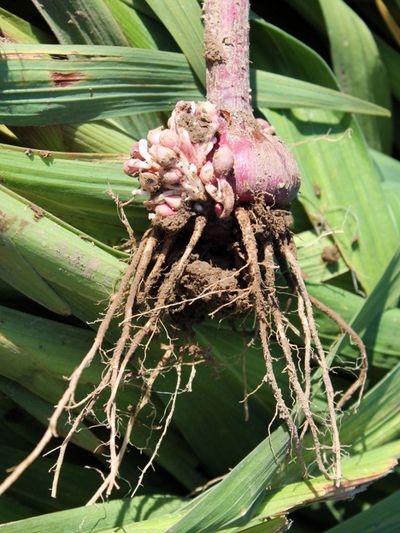Reproducing Bulbs with Shoots Growing from Offsets
Bulbs produce bulbils and bulb offsets as easy propagation parts. You need to know what to do with offsets to increase your stock of favorites. The shoots growing from offsets will tell you when it is time to divide and remove the new baby bulbs. You can wait until the shoots coming from a bulb die back to divide or take the offsets when the leaves are still green. Bulbs are propagated through seed, scales, bulbils, chipping, and division of the shoots growing from offsets. Starts from seeds take a ridiculously long time to flower and are really only useful as a hobby and interesting project. Growing from scales is useful for lilies, while chipping works on daffodils, hyacinth, and a few other species. Bulbils are easy to grow but, again, take quite some time to flower. The quickest and easiest way is through offsets, which can flower within a year or two. The small shoots growing from bulbs are an indicator that your plant is mature and has decided to make babies. Not all bulbs reproduce this way, but many of our most common ones do. This is a bonus because your old bulb will begin to produce smaller flowers and eventually none at all. However, the bulb offsets will become new flowers and the parent bulbs produce many, meaning more beautiful flowers!
What to Do with Offsets
You can take the offsets at any time, provided you are prepared to care for them if they still have leaves left. Dig around the main plant carefully and remove the small bulbs around the main bulb. If these have already sprouted, plant them in a prepared bed and water them in. Keep them moist as they establish. The leaves will drop off in the fall. Mulch the bed for winter. In areas where you have to lift tender bulbs for winter, dig up the plant and collect all the offsets. Separate these out from the large parent plant, which will begin to produce less and less. Plant the small bulbs in spring.
